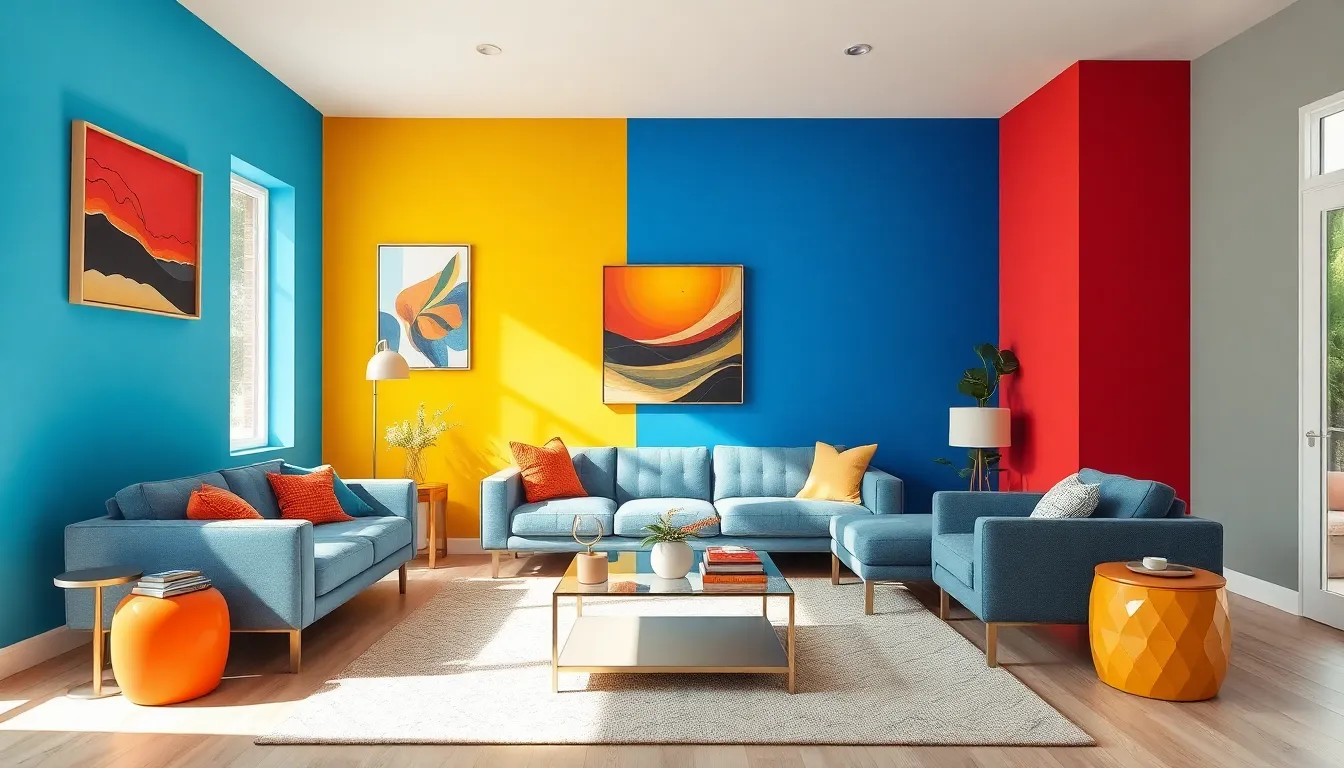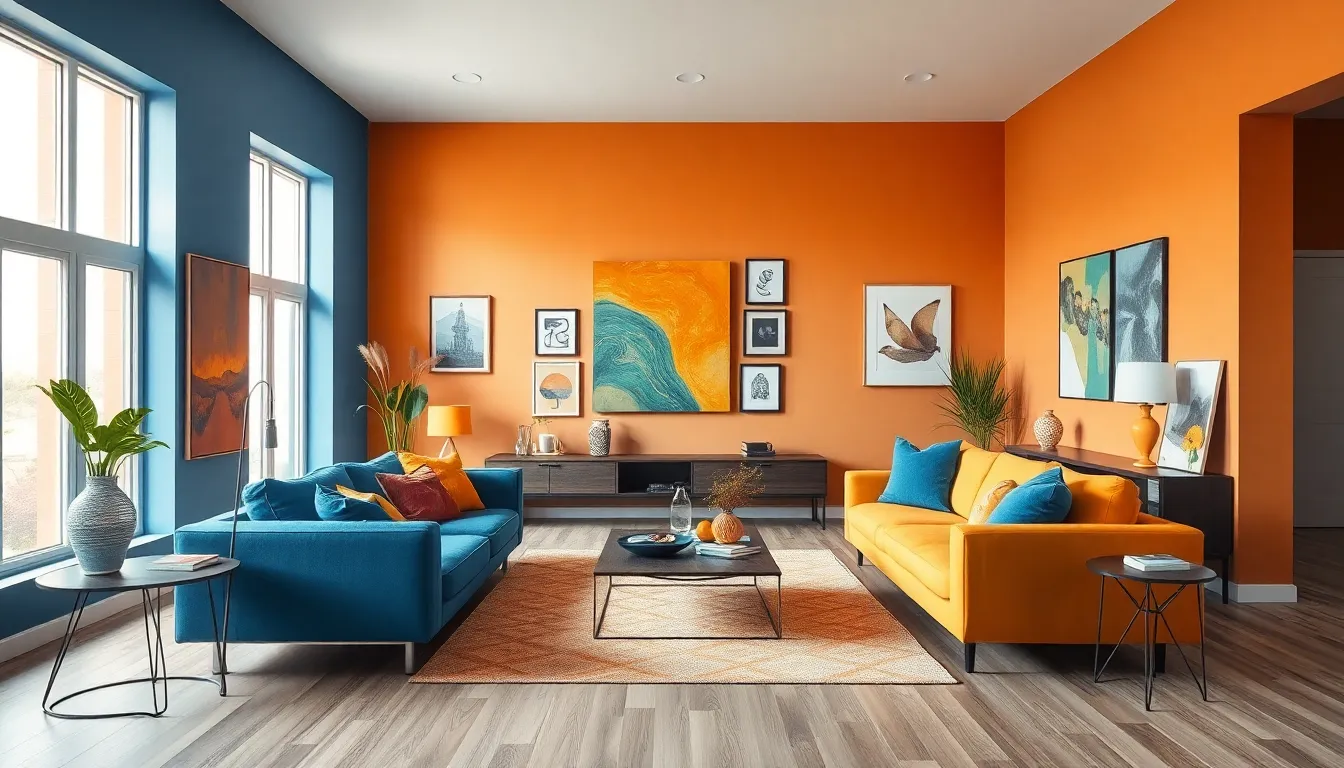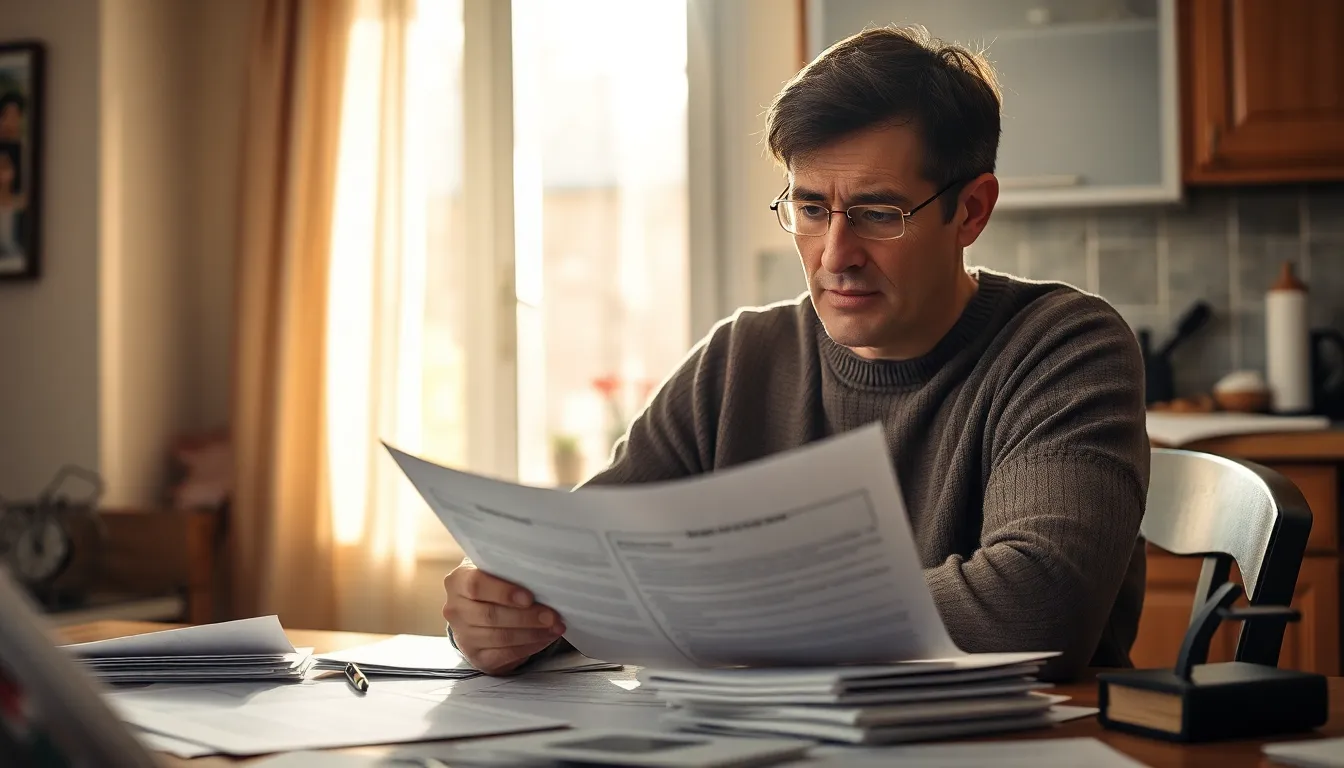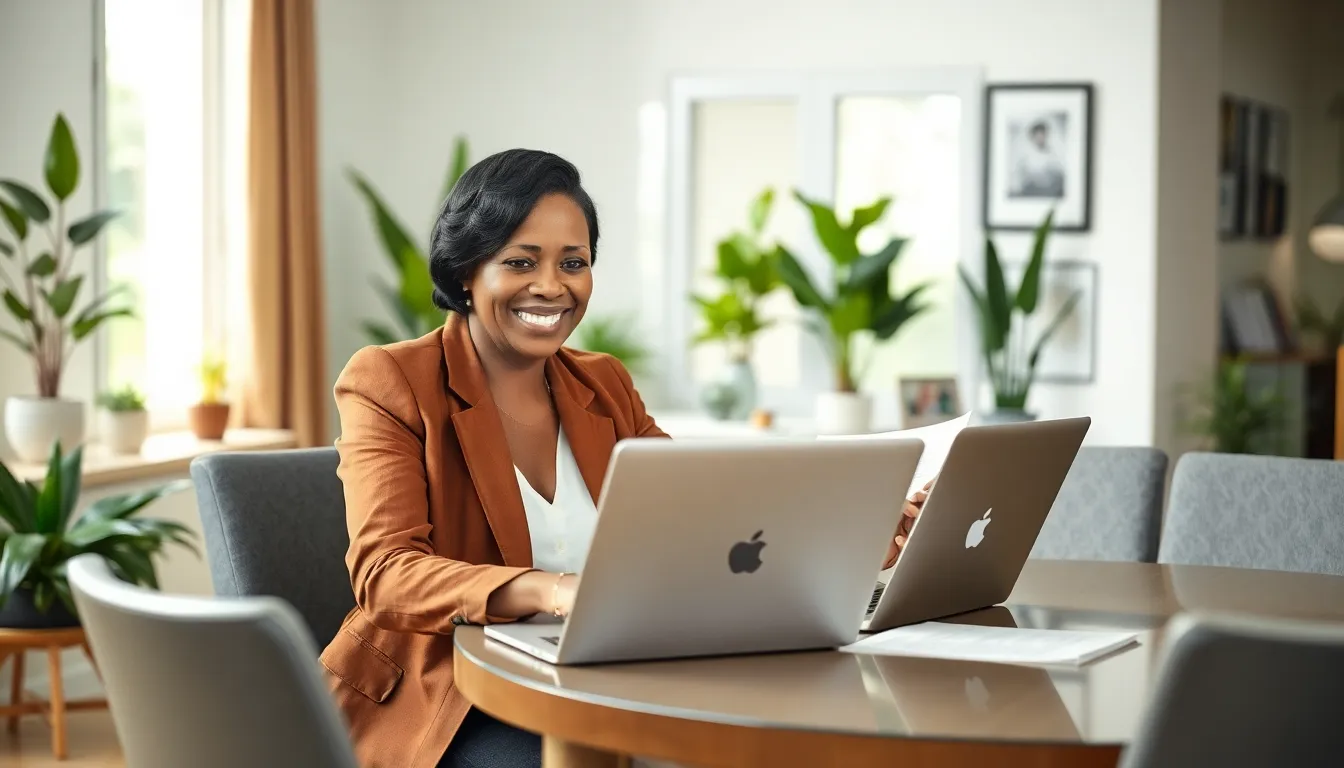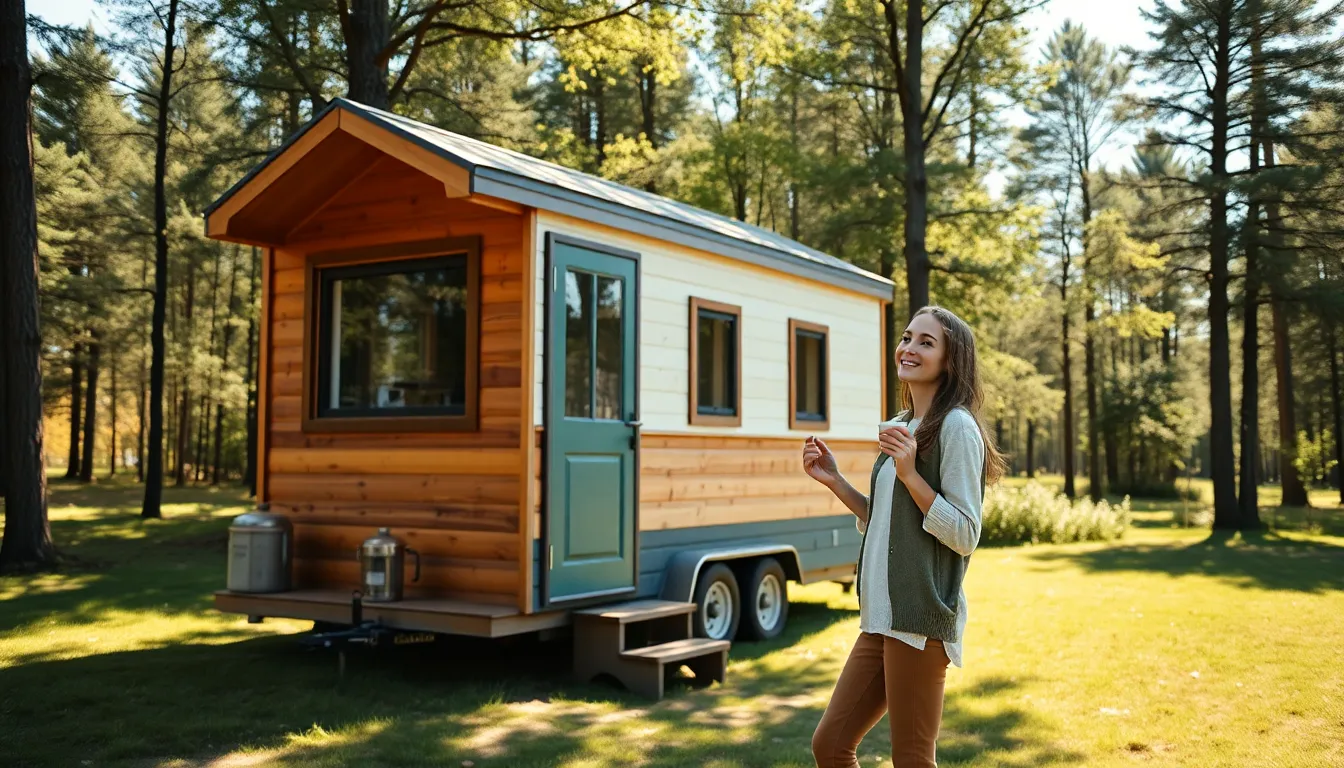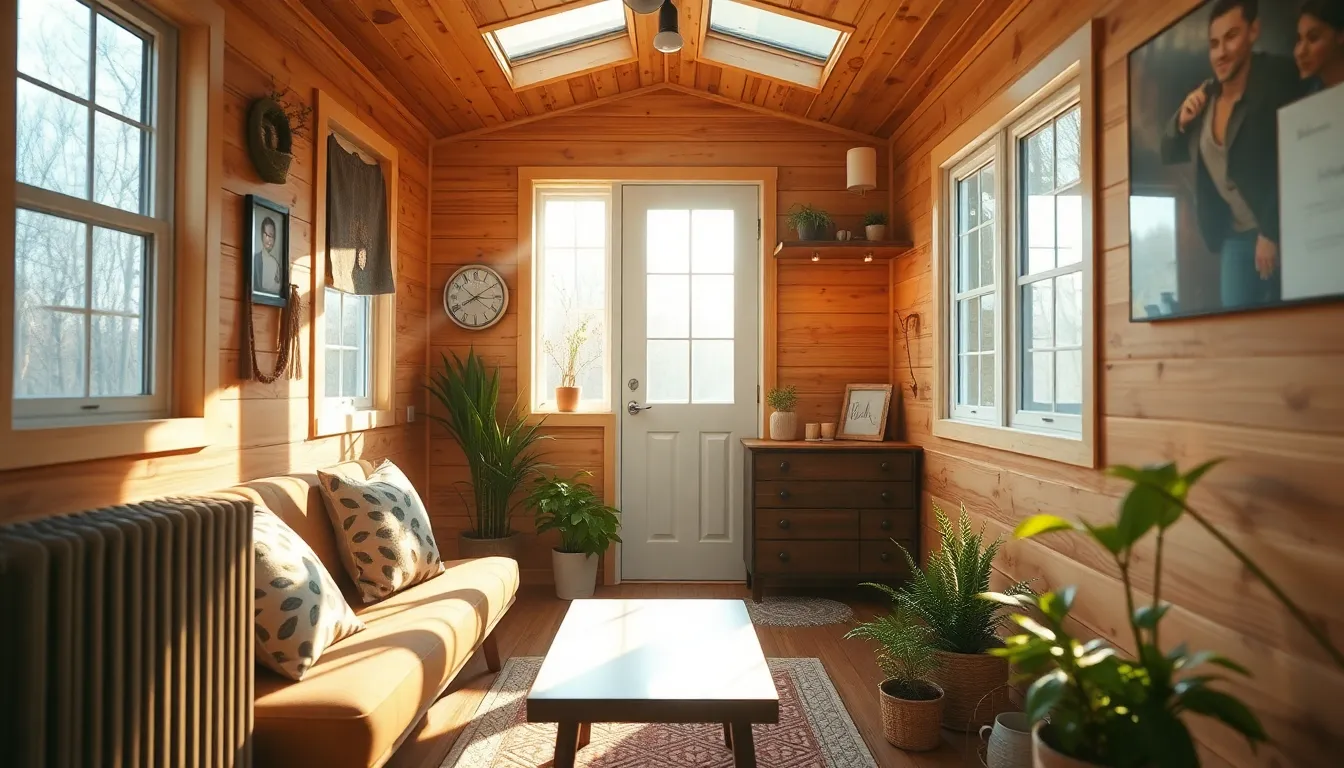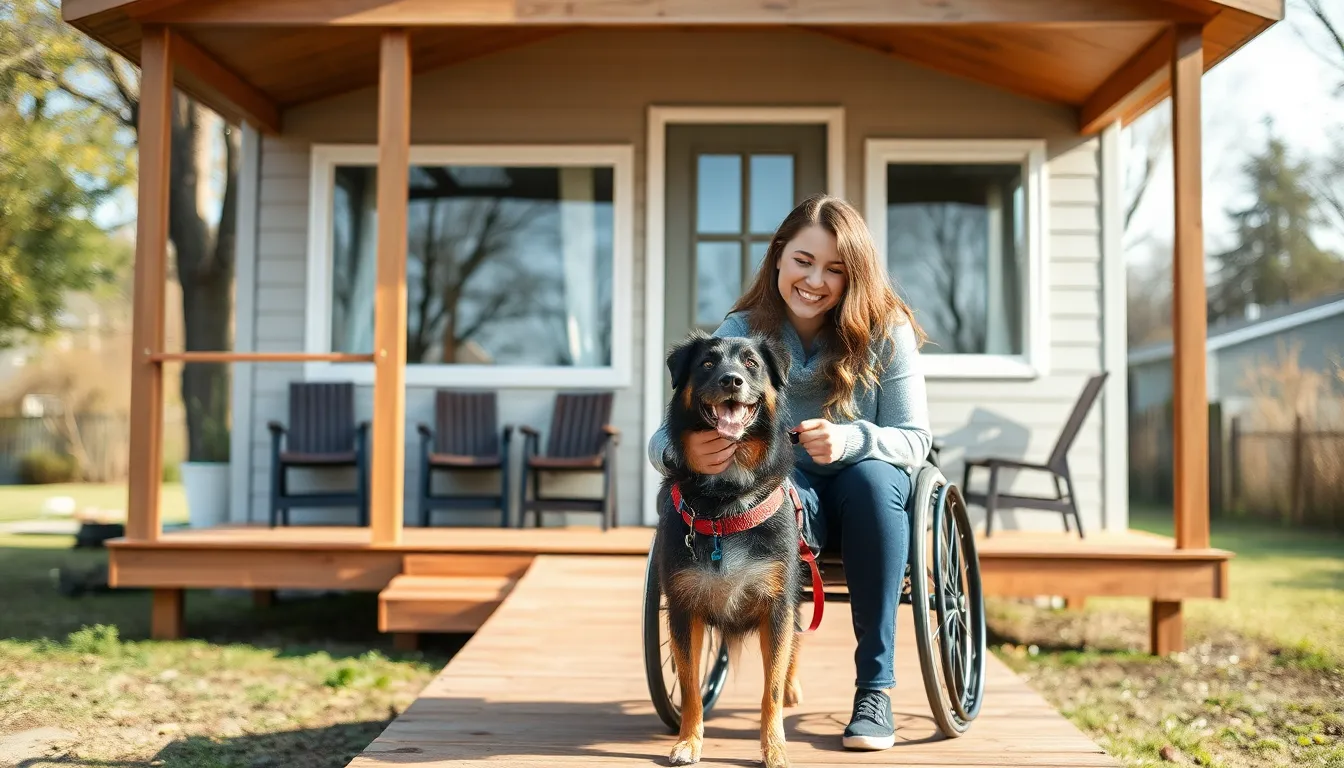Imagine walking into a room that feels like a vibrant masterpiece, where colors dance together in perfect harmony. Color-blocked interiors are not just a trend; they’re a playful way to express personality and creativity in any space. It’s like a painter’s palette exploded, and the results are nothing short of spectacular.
Table of Contents
ToggleUnderstanding Color-Blocked Interiors
Color-blocked interiors represent a dynamic approach to design, showcasing bold combinations of colors that energize spaces. This style allows for playful contrasts that enhance personal expression.
Definition and Concept
Color-blocked interiors involve strategically applying contrasting colors in distinct sections of a room. Each color creates a visual division, emphasizing the unique aspects of the space. Designers often choose colors that complement or contrast, generating excitement and depth. This style’s versatility makes it suitable for various environments, from residential homes to commercial spaces. Color-blocking encourages experimentation with hues, allowing individuals to reflect their tastes through their surroundings.
Historical Context
Color-blocking gained prominence in the early 20th century with the Bauhaus movement, which celebrated simplicity and functionality. Artists like Piet Mondrian influenced this trend, showcasing geometric patterns in art. In the mid-20th century, pop art further popularized color-blocking, emphasizing vibrant palettes. The 1980s saw a resurgence as interior designs embraced bold colors and forms. Today, color-blocking melds with contemporary design, reflecting its enduring appeal and adaptability in modern interiors.
Benefits of Color-Blocked Interiors
Color-blocked interiors offer multiple advantages, enhancing both aesthetics and emotional well-being. Unique design elements attract attention, energize spaces, and foster personal expression.
Visual Appeal
Bold color combinations create striking visuals within any room. Tracks of vibrant hues contribute to a dynamic atmosphere, which can elevate the overall design impact. Distinct sections delineated by contrasting colors add depth, making spaces more engaging. Rooms infused with color-blocking techniques appear more sophisticated, showcasing an artistic approach to interior design. This method invites creativity, inspiring homeowners to experiment with their unique palettes.
Psychological Effects
Color affects mood and perception significantly. Bright hues often stimulate excitement and energy, promoting engagement and sparking creativity. Warmer colors like reds and oranges can create an inviting atmosphere, while cool tones such as blues and greens promote calmness. Color-blocked interiors can enhance productivity by associating certain colors with specific tasks. When designed thoughtfully, these spaces contribute to a balanced emotional environment, positively influencing overall well-being.
Popular Color Schemes
Color-blocked interiors embrace various popular color schemes that enhance the visual appeal of spaces. Two distinct styles include bold color combinations and subtle pastel pairings.
Bold Color Combinations
Bold color combinations exude energy and excitement. Trendy choices often involve primary colors like red, blue, and yellow that create striking contrasts. Pairing vibrant shades like electric blue with sunny yellow can achieve dramatic effects. These combinations energize a room while highlighting unique architectural features. Accent pieces in similar bold tones can further tie the design together, creating a cohesive look. Designers often utilize these dynamic pairings in living rooms or play areas to foster creativity and engagement. Environments featuring bold hues inspire a playful and stimulating atmosphere, perfect for active spaces.
Subtle Pastel Pairings
Subtle pastel pairings offer a calming alternative to bold colors. Soft shades like mint green, blush pink, and light lavender create serene environments. These colors work well together, allowing for gentle transitions between different areas of a room. Implementing pastels can enhance both small spaces and larger areas, establishing an inviting and elegant ambiance. Incorporating textures alongside these soft hues can add depth and interest. Accents of white or cream can further brighten the palette, ensuring it feels fresh and airy. Designers often favor subtle pastels for bedrooms or nurseries, promoting relaxation and tranquility.
Tips for Designing Color-Blocked Interiors
Designing color-blocked interiors requires thoughtful planning and a clear vision. The selection of colors and application techniques plays a crucial role in achieving an appealing look.
Choosing the Right Colors
Establish a central theme that reflects the intended mood of the space. Selecting bold colors like red, blue, or yellow creates an energetic environment ideal for creative areas. Opting for softer tones such as mint green, blush pink, or light lavender promotes relaxation, particularly in bedrooms. Consider the existing furniture and decor as they influence color choices. Analyze how natural light interacts with colors throughout the day; it can alter perceptions and impact the overall ambiance. Prioritize complementary shades to create cohesive looks, ensuring visual harmony throughout the room.
Techniques for Effective Application
Incorporating color-blocking demands precision and creativity. Use painter’s tape for clean lines when applying contrasting colors. Divide walls into sections, allowing individual colors to stand out while maintaining balance. Experiment with shapes, such as rectangles or triangles, for added visual interest. Integrate color into furniture, like accent chairs or throw pillows, providing a unified aesthetic. Additionally, include textures alongside colors; materials like velvet or cotton enhance the overall appeal. Be mindful of proportions; outstanding color-blocking draws attention without overwhelming the space. Finally, assess the overall vibe and make adjustments as needed for the desired effect.
Conclusion
Color-blocked interiors offer a refreshing way to infuse energy and personality into any space. This design approach not only captivates the eye but also enhances emotional well-being through carefully chosen color combinations. By balancing bold hues with softer tones, individuals can create environments that inspire creativity or promote tranquility.
As color-blocking continues to evolve, its versatility remains a key advantage. Whether one opts for vibrant contrasts or subtle pastels, the potential for unique expression is limitless. With thoughtful planning and a clear vision, anyone can transform their home into a stunning showcase of color and style, making every room a true reflection of their personality.

